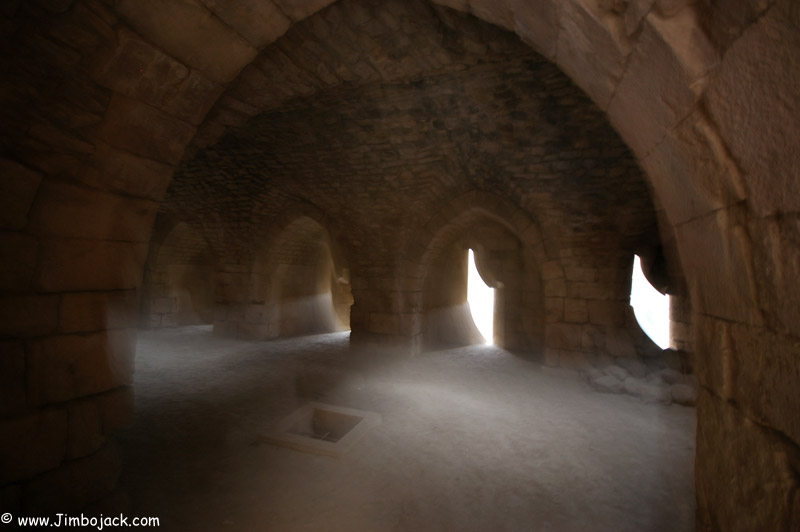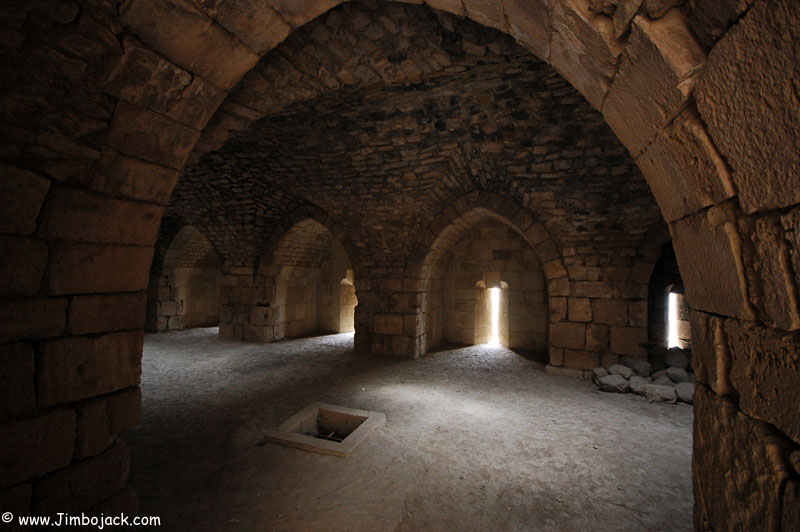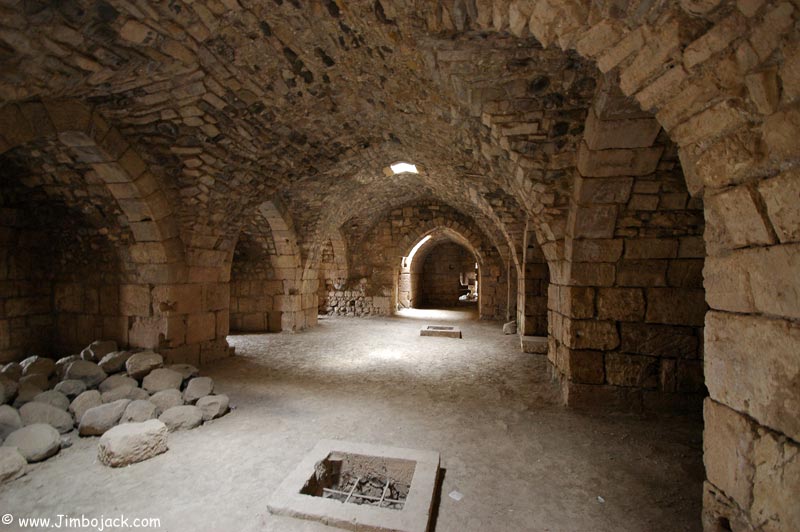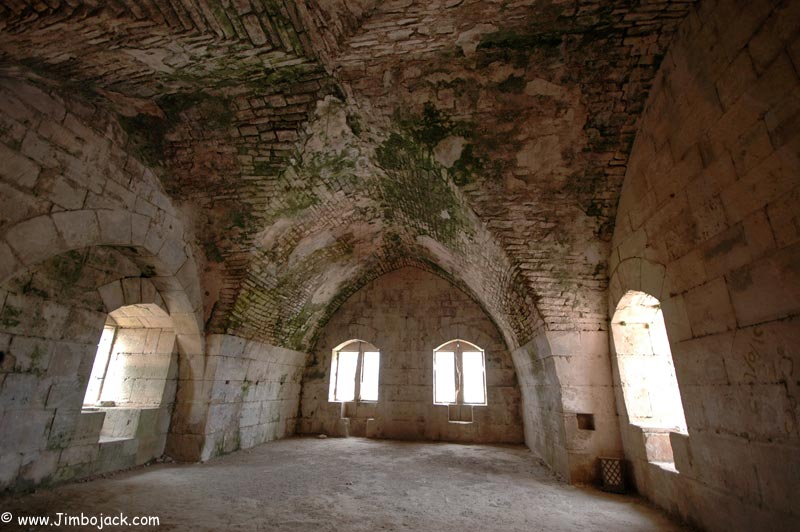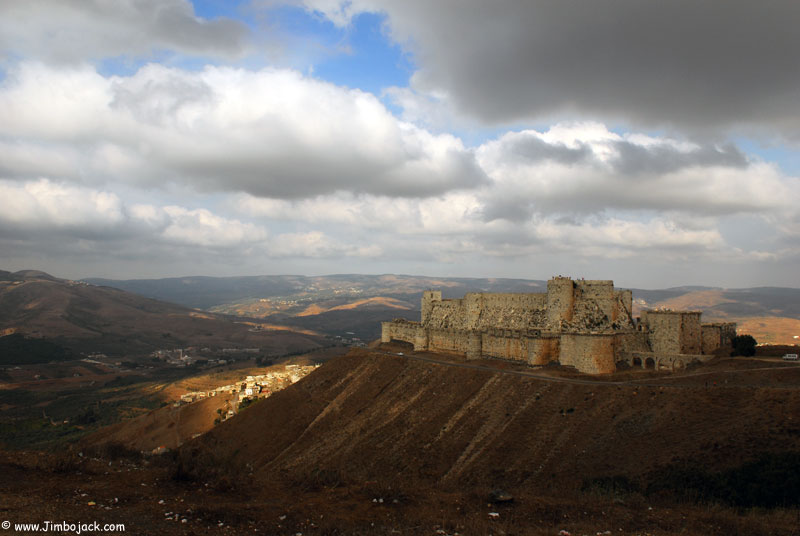
"The finest castle in the world" according to T.E. Lawrence, Krak des Chevaliers (Qala'at Al-Husn) is a very well preserved crusader castle dating back to 1031. The original fortress was built by the Emir or Homs, but crusaders from the 1st crusade took it over on their way to Jerusalem in 1099. Eleven years later they established a stronghold throughout the region. In the middle of the 12th century, the first crusaders were replaced by the Knights Hospitaller, also known as the Knights of St. John, who built upon and expanded the fortress into its present form. The knights occupied the castle from 1144 to 1271. The castle was very well constructed, and despite various sieges and attacks it was never breached. The first of these was an attack by the then Emir of Aleppo, Nur Ad-Din. His forces were defeated by Christian reinforcements sent from Tripoli and Antioch at the foot of the castle in 1163. The second was a trial one day siege by Saladin in 1188, soon after the battle of Hittin in which he defeated the kingdom of Jerusalem.
The Mamluk sultan Beybars with his Egyptian army attacked the castle in 1271, at which time the knights at Krak des Chevaliers were the last crusader outpost (Jerusalem was lost at this point). The castle which was built to garrison 2000 warriors, only had 200 people to defend it. With enough supplies to last them for five years, the crusaders agreed to depart after only a month of siege after receiving a letter from the Crusader commander in Tripoli (Lebanon) (I will add photos and descriptions from my previous trip to Lebanon sometime in the near future, including the Citadel of Raymond de Saint-Gilles in Tripoli) advising them to negotiate a surrender as there were no more reinforcements. The crusaders left under negotiated terms of safe conduct, and learned upon their arrival in Tripoli that the letter had been a forgery. The mighty castle was won without anyone ever breaching its defenses. Beybars garrisoned his army in the castle, further added to the defenses and restored the damage that he had done with his mangonels, catapult like machines which hurled stones weighing up to 270 kilograms at the walls. Today many parts of the castle bear distinct signs of Frankish and Arab architecture. Gothic, Romanesque and geometric Islamic building styles can be seen throughout the castle.
The name Krak is though to originate from a medieval French corruption of the Syriac word for fortress. It could also come from "Husn Al-Akrad", the castles original name meaning "Castle of the Kurds". Before the French started excavating the ruins, the entire castle was inhabited by people from the nearby village (500 Alawis according to one book I read) of Al-Husn who had to be evicted.
Krak des Chevaliers

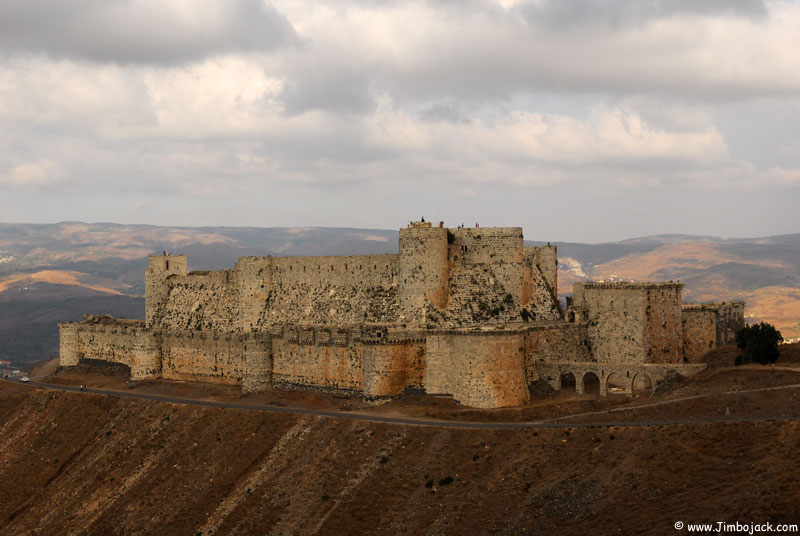
Arabic inscriptions over the entrance gate commemorating the restoration work done by Beybars in 1271.
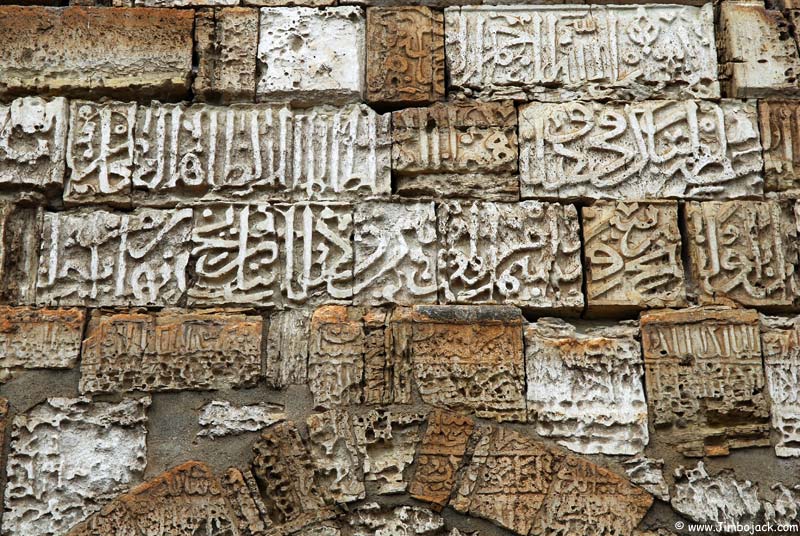
View from the castle towards the south (Lebanon), below is the village of Al-Husn

Walls of the inner fortress
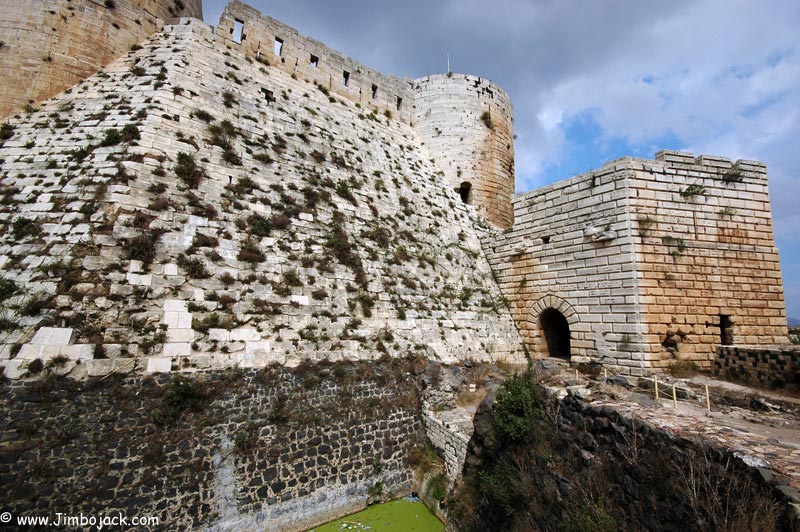
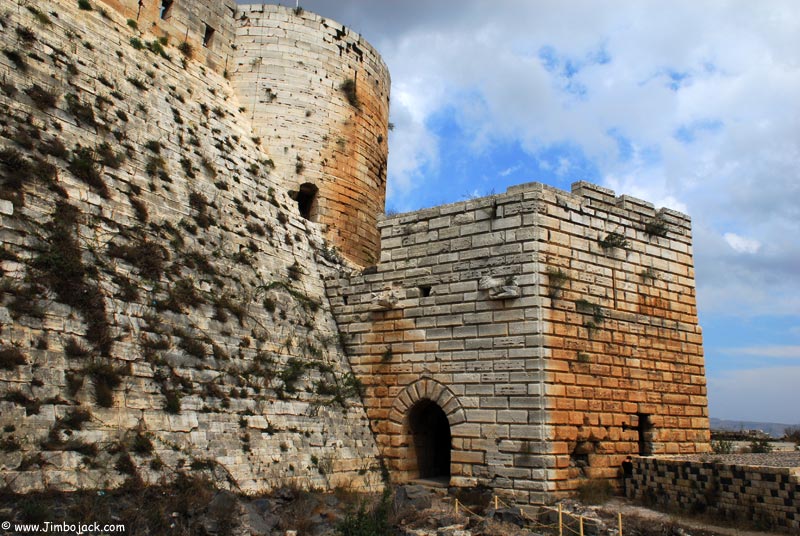
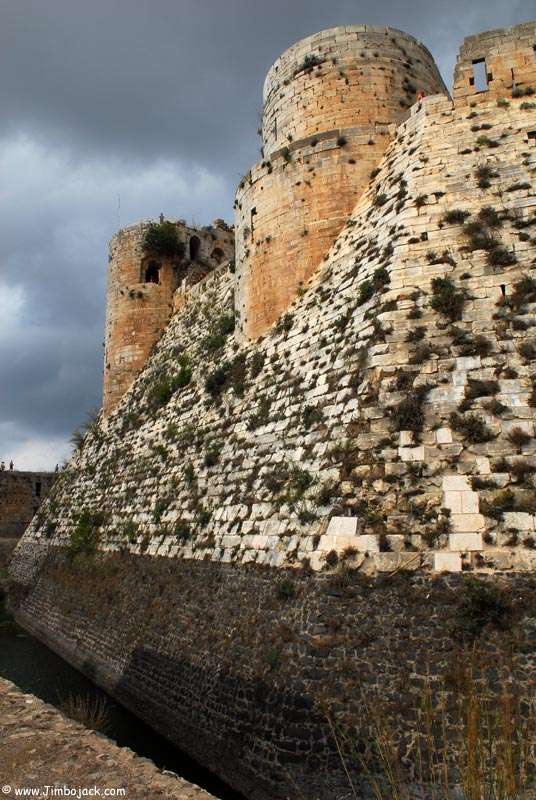

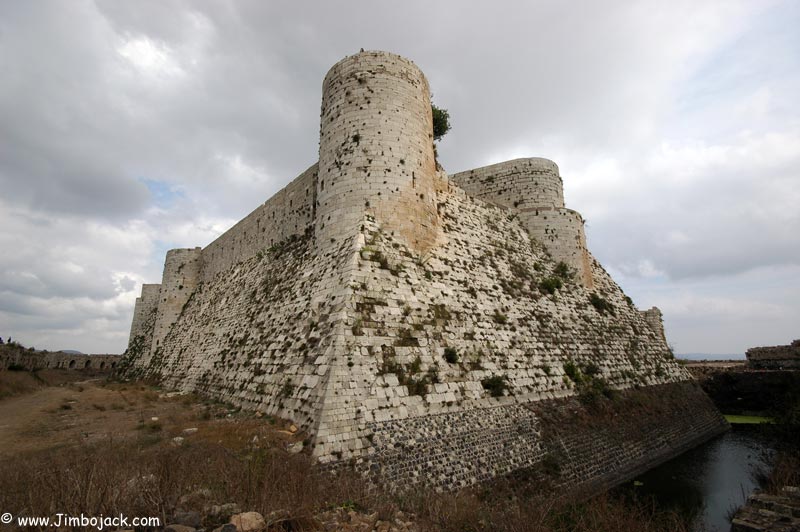
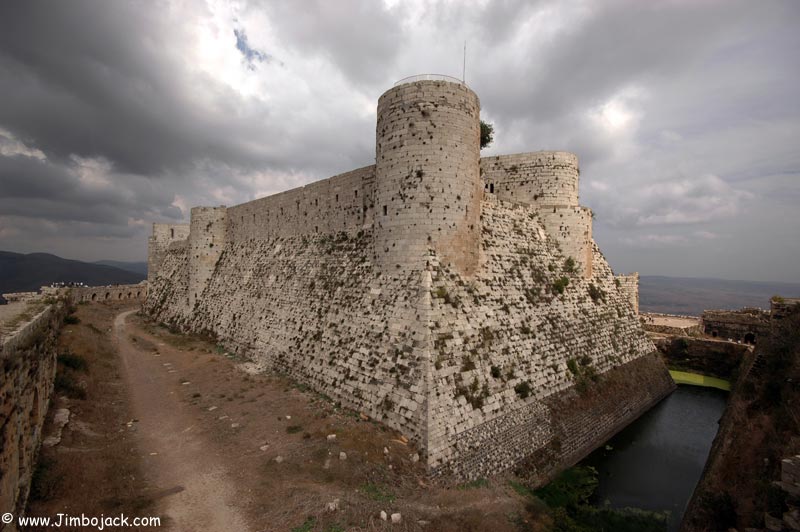
Shepard with his sheep, outside of the western wall
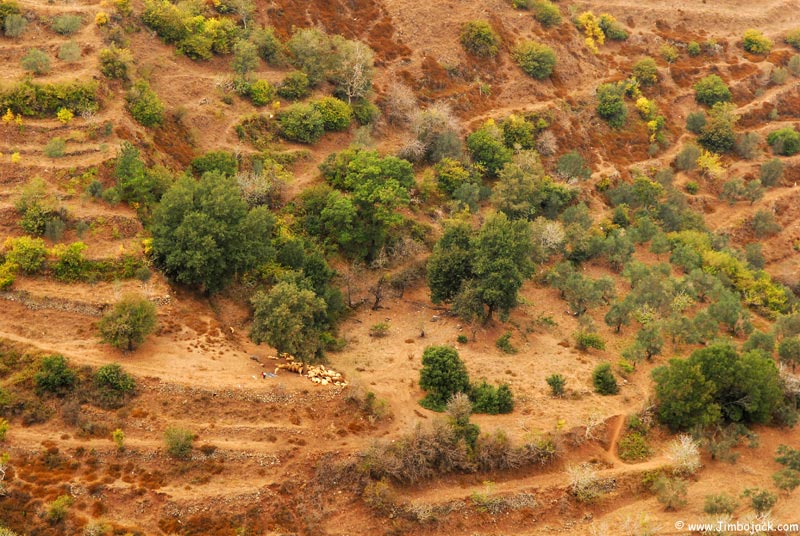
Tower of the Daughter of the King
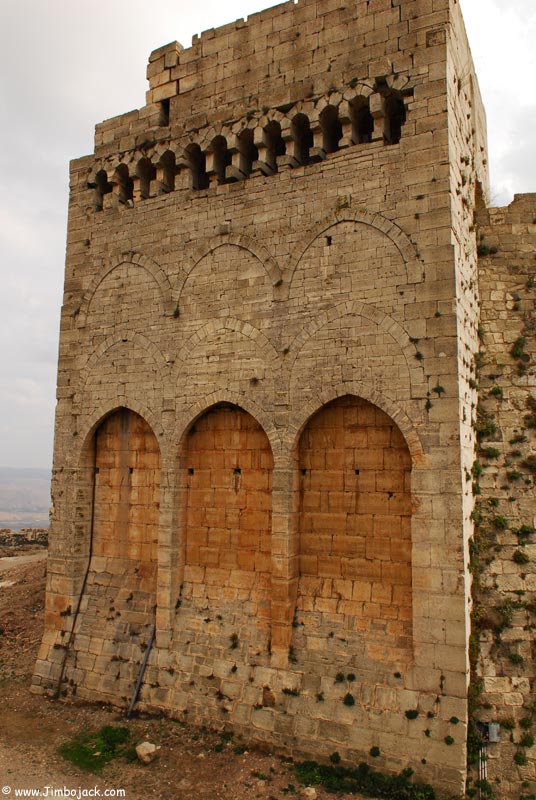
Inner fortress
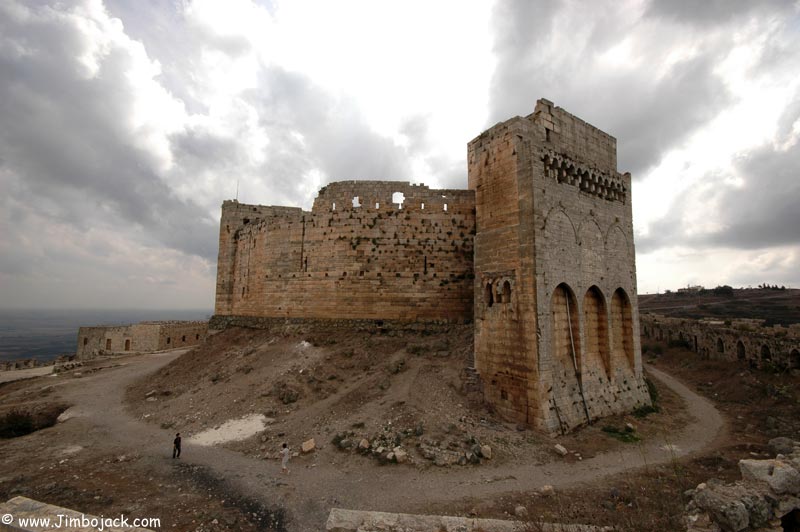
Northern wall and the village of Al-Husn. The tower here is called the Windmill Tower. Windmills were invented in the Middle East in 634 for the caliph Umar ibn al-Khattab. They had 6 or 12 sails covered in fabric or palm fronds and were used for grinding corn or drawing up water for irrigation. They were not used in Europe for another 500 years and the idea was probably brought back by returning crusaders.
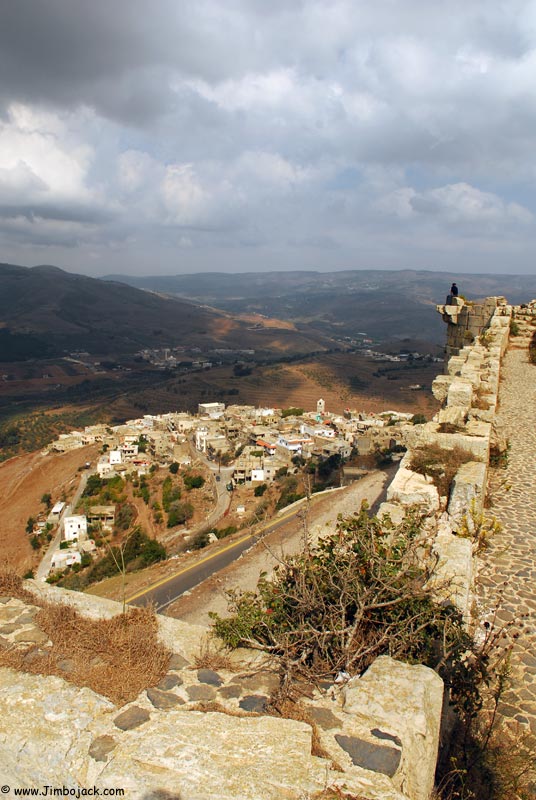
View of the inner fortress courtyard from the Warden Tower, the former headquarters of the Grand Master of the Hospitallers
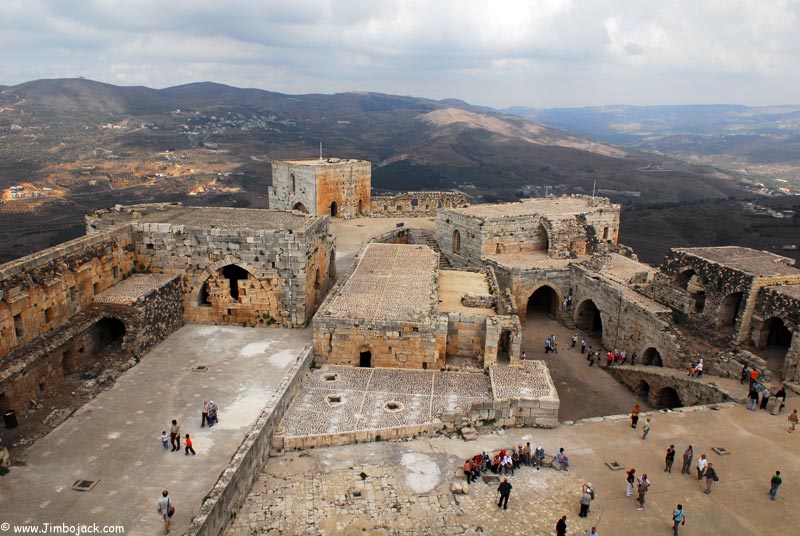
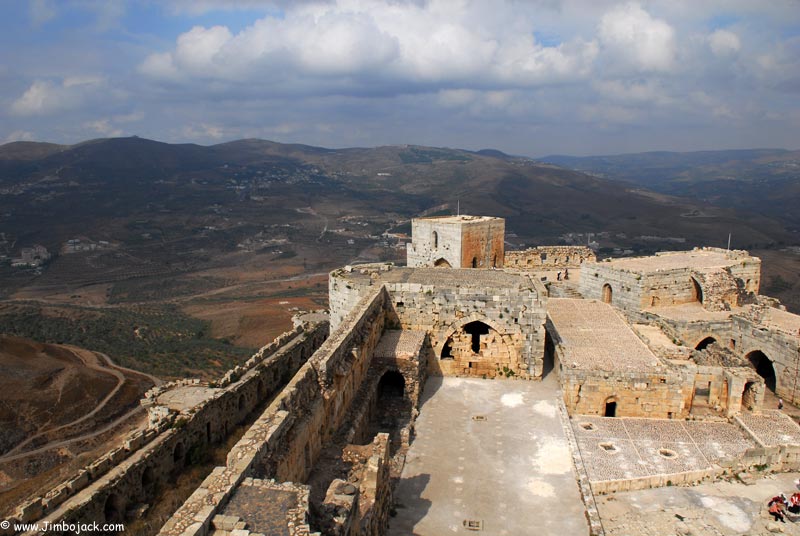
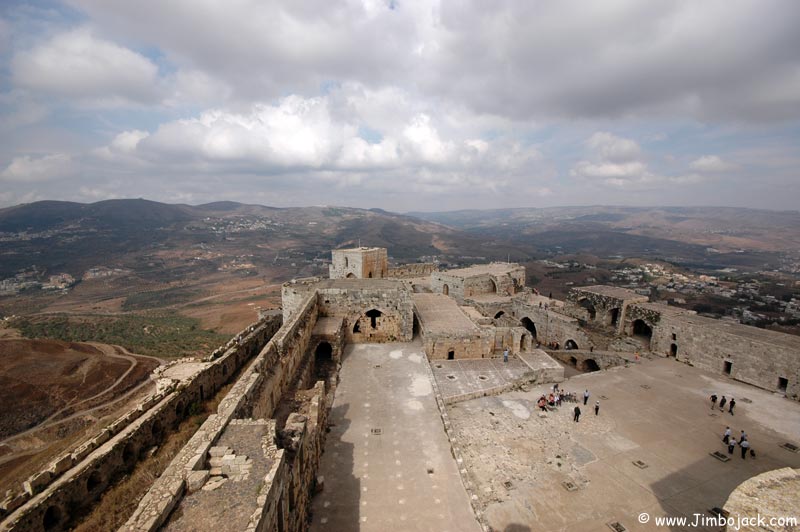
View from the Warden Tower towards the South-East
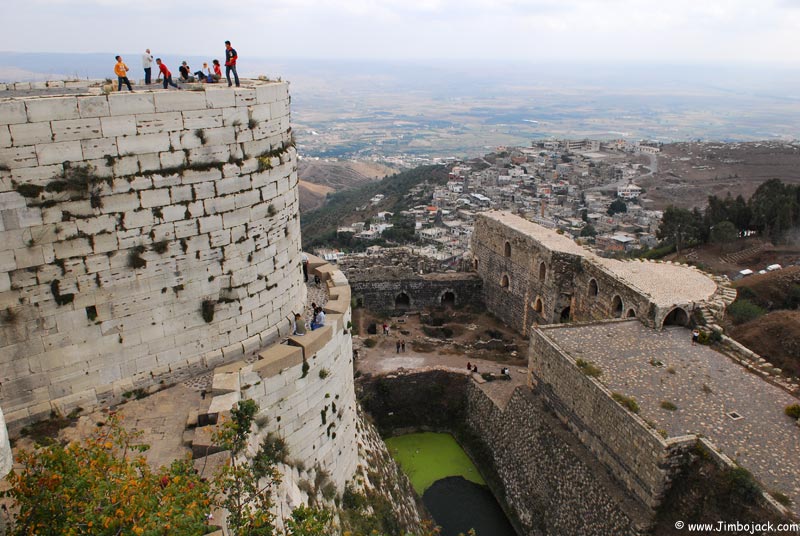
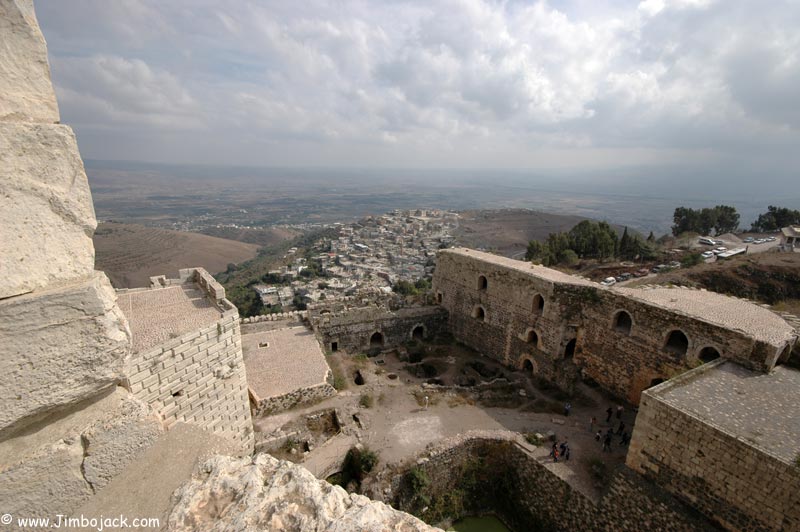
Remnants of the Hammans, Muslim baths
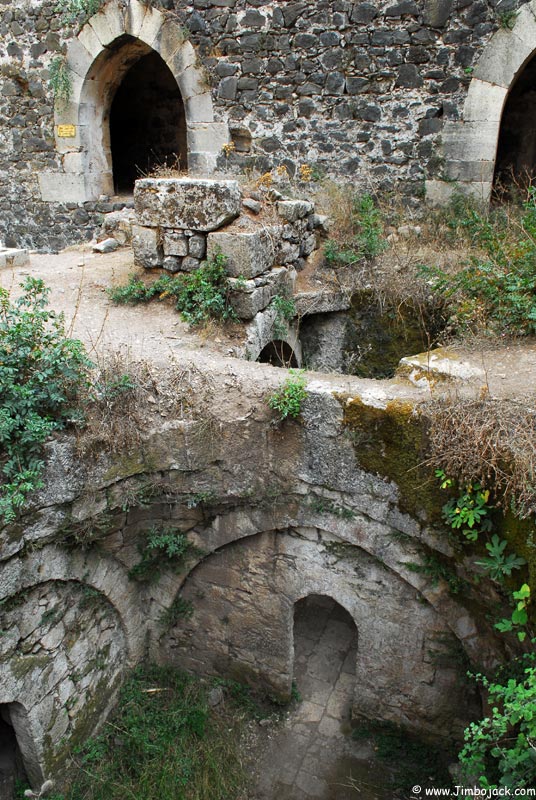
Inside of the stables

One of the many passageways in the castle
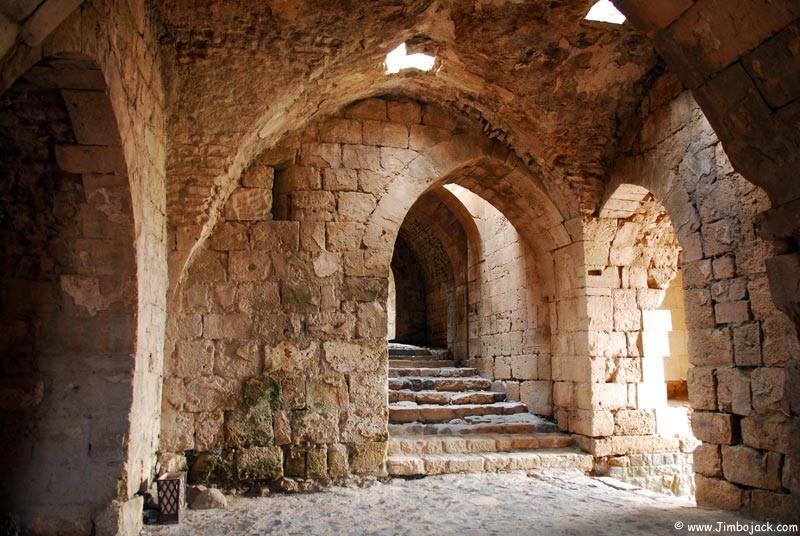
Gothic facade of a loggia (portico), the doors lead into a vaulted hall which was probably used as a reception room
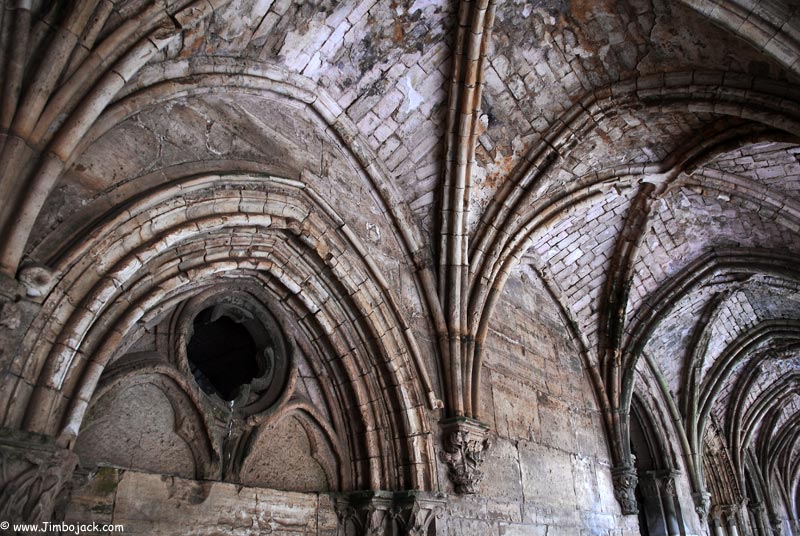
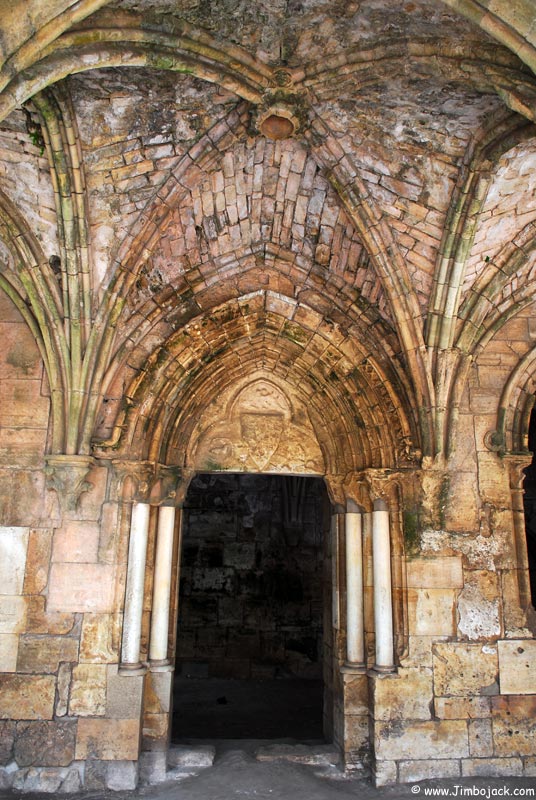
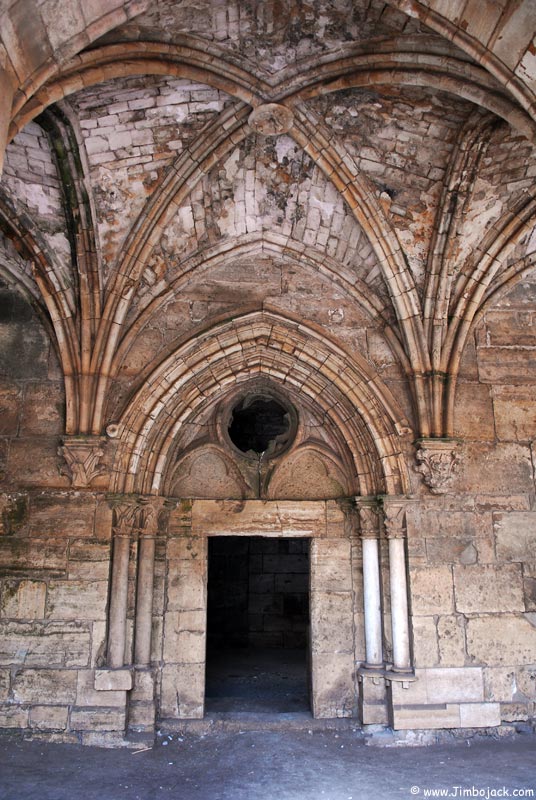

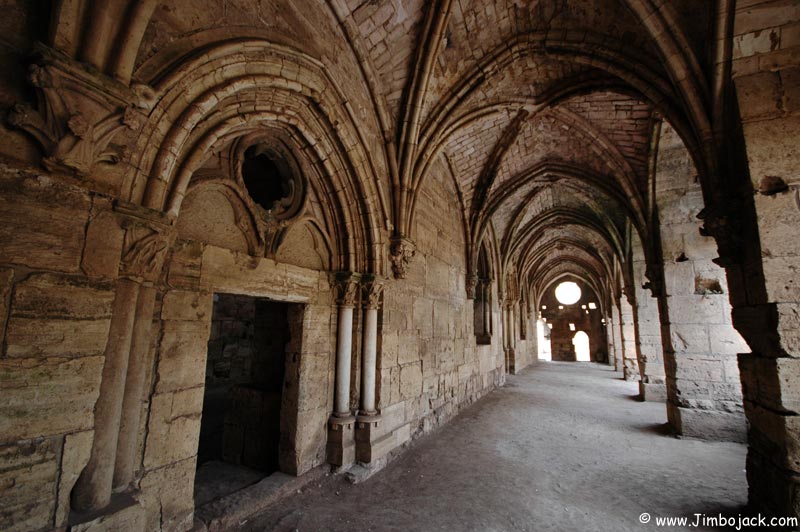
Gothic ceiling
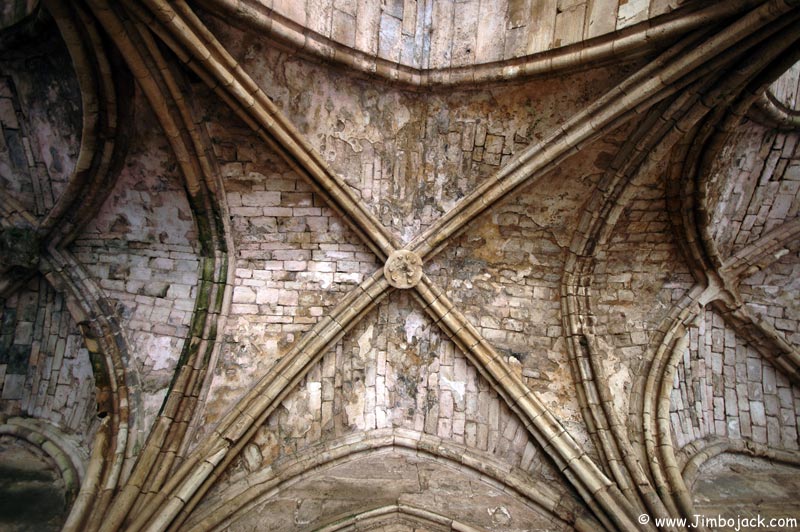
Various other defensive walls and towers
